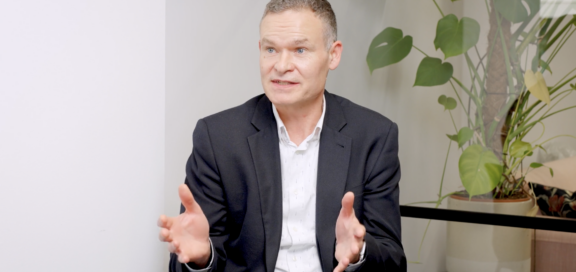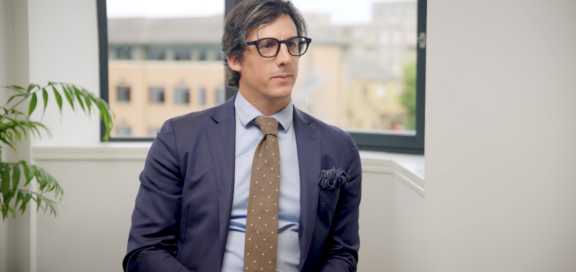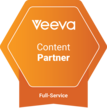
Podcast: Pharmacohesion: Strategy
About Podcast: Pharmacohesion: Strategy
Strategy brings clarity and purpose to the mission to ensure your brand is front-of-mind with your target market.
At Dice, we believe in asking the right questions when it comes to your strategy including why are we doing this, does this execution deliver on the strategic imperative and are we just spending the budget on tools without purpose?
In our latest episode with Matthew Dickinson, Sandra Laird and Julie Hardy, we dive into all things strategy.
Transcript
00:00:00:00 – 00:02:23:04
Matthew: Hi, my name is Matthew Dickinson. I’m the Managing Director of Dice Medical Communications. I’m here today with Julie Hardy and Sandra Laird, and we’re going to talk about strategy as one of the four pillars of our Pharmacohesion process. Would you like to introduce yourselves?
Julie: My name is Julie Hardy, and I’m an Account Director at Dice. I’ve been here for six years.
Sandra: I’m Sandra Laird, Director of Medical Education and Market Access at Dice.
Matthew: To provide some context, our Pharmacohesion process has four steps. We start with insight generation, which informs our strategy. Then we execute that strategy, measure success in an omnichannel setting, and use those results to refine our insights. This process evolves our strategies year after year.
Matthew: Sandra, as part of Pharmacohesion strategy, what are your thoughts?
00:02:23:04 – 00:04:00:11
Sandra: I always think of strategy simply—targeting, positioning, and segmentation. For many clients, positioning is defined globally, but we actively help with targeting: who they should reach, with what message, when, and how often. We also guide how to deliver different messages to different segments.
Matthew: Absolutely. Julie, from your perspective as an Account Director, you’re involved in strategy daily, executing and refining it. Thinking of past campaigns—without going into specifics—one example is generating insights in a therapy area where men were hesitant to discuss their concerns.
Julie: Right. The strategy we developed focused on helping clinicians understand deeper patient insights. Working closely with clients is key to uncovering their true objectives. It often takes time and conversations to clarify exactly what they’re trying to achieve.
00:04:00:13 – 00:05:06:03
Julie: We’ve had clients where what they initially envisioned turned into something completely different—and much bigger. These campaigns ended up reaching far more people than we originally expected.
Julie: In one instance, we engaged both HCPs and their patients directly, which isn’t something we typically do. Usually, our projects focus solely on HCPs, but this dual approach led to meaningful conversations.
Sandra: Exactly. To gain valuable insights, we sometimes need to think differently. Interestingly, while strategy often informs tactics, there are cases where tactics shape the strategy instead.
00:05:06:04 – 00:06:21:11
Sandra: The key question is, what strategic imperative are we addressing? Sometimes, a tactic may not fit, or it needs support from other tactics to align with the strategic goal. It’s not a one-way process. Strategy informs tactics, and tactics inform strategy.
Matthew: This cyclical approach helps shape both. Our Pharmacohesion process reflects this, as we measure executions, uncover new insights, and tweak the strategy accordingly.
For example, in a therapy area where we wanted to encourage more conversations, our strategy was just that—more conversations. As we executed, we saw which conversations were most beneficial, helping us refine our strategy for the future.
00:06:21:13 – 00:07:31:20
Matthew: These campaigns are often three or four years long. The key benefit is aligning the strategy with execution. If a tactic doesn’t support the strategic goals, we question its purpose. One of the biggest strengths of our process is the ability to cut out unnecessary actions. If something doesn’t serve the strategy, we ask why we’re doing it or spending budget on it.
Sandra: We can also learn a lot from other industries. Take Apple, for example. They’ve made their products desirable and central to everything they do. They don’t focus on the 150 features, but instead on what makes their products compelling.
00:07:31:22 – 00:08:28:14
Matthew: Apple focuses on a few key things—like 10,000 songs in your pocket with the iPod—rather than overwhelming consumers with every feature.
Sandra: We can learn from this approach by thinking beyond the mechanical, like just positioning a product for a specific segment. Exactly. It’s not just about positioning doctors; it’s about how we make them want to prescribe.
Julie: We also learn a lot along the way. We had our strategy and plans, but some tactics didn’t work, so we adapted. Right. As we worked, we realised some tactics weren’t effective. We had to cut projects that were taking too long for HCPs to engage with, and focus on condensing and targeting the message within the limited time we had.
00:08:28:16 – 00:09:36:22
Sandra: I love what Collins and Paul say in Built to Last—fail fast. Unfortunately, in pharma, we’re not great at that. We often want to carry things through, but if something’s not working, we should stop and move on.
Matthew: Absolutely. From Dice’s perspective, our clients often have lengthy strategic documents—50 pages or more.
Sandra: When we’re involved in developing those plans, it’s great, but when we’re not, it’s crucial to ask the client to share a summary and walk our team through it. That helps everyone stay aligned.
00:09:36:24 – 00:10:57:03
Sandra: For me, the key is understanding the focus of the brand plan—aligning with the strategic imperatives. We need to ensure that everything we do throughout the year aligns with those objectives.
Julie: When we’re not involved from the start, we miss that deeper understanding of why the brand plan was created. Sometimes we’re brought in at the end, when the brand plan is already set, but we still need to understand the full context.
Sandra: Even if we’re not directly involved, if the client takes the time to walk us through that evolution, we get up to speed much faster.
Matthew: That’s the benefit of the process we follow—it helps us move faster. If we’re all aligned on insights, strategy, and execution, with continuous measurement, we can adapt and execute more effectively.
00:10:57:05 – 00:12:00:08
Matthew: Our process speeds up what’s usually a slow, laborious process. We quickly decide on tactical execution—what to do, what to stop, and where to focus energy. This approach helps shift beliefs and articulating strategy internally is key. For example, when briefing a project, we clearly communicate the strategy, the insight behind it, and how we want it executed. This clarity is pivotal.
Matthew: Thank you, Sandra and Julie. The key takeaway for me is that the more we partner with clients, the stronger the strategic thinking and execution. Would you agree?
Sandra & Julie: Yes, absolutely.
Matthew: Great. Now, let’s move on to executing against the strategy.
Resources
- Veeva Systems
- PhRMA – Pharmaceutical Research and Manufacturers of America
- ABPI – Association of the British Pharmaceutical Industry
- Global Genes (Patient Organisation)
- NORD (Patient Organisation)





